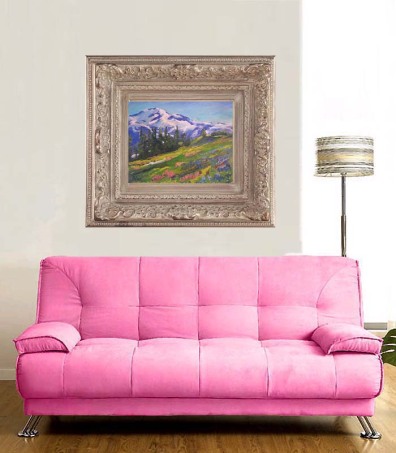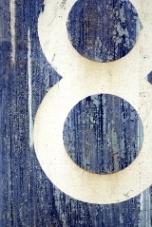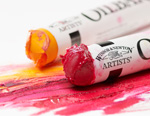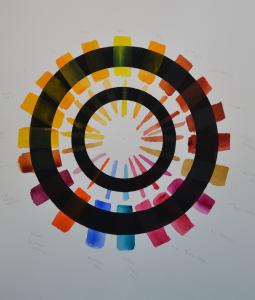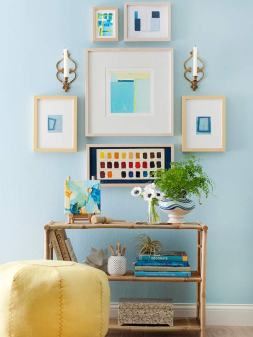 Are you trying to grow your art blog or website? Are you finding that you are not getting many subscribers or much traffic?
Are you trying to grow your art blog or website? Are you finding that you are not getting many subscribers or much traffic?
You may find that you are getting some comments.
And maybe a few subscribers, and shares, and likes.
But if you’re reading this, chances are you’re running a blog with the intention of marketing a business and making some money.
Now, that could be a bit distressing, because most bloggers are broke.
Here’s why …
It’s all about you
This is the big one.
Unless you are a famous movie star like Brad Pitt or Angelina Jolie, nobody cares about you personally. So wake up and smell the coffee, because it ain’t about you baby.
Yes, that’s right — all of your posts are about you, your news, your newest paintings or photographs, your studio. And you wonder why nobody signs up for more?
This is where I see so many artists making their biggest mistake. I even saw a website recently of a art business guru (I am obviously not going to mention the expert’s name) who was telling her artist followers to blog constantly about their art and their newest art offerings. This is terrible advice.
No One Wants to be Sold, They Want to be Helped
Stop and think about this for a moment. Why did you click this link and decide to read this article? Why are you here? It’s obvious isn’t it? You wanted to get some help growing your art career. You wanted some tips. You wanted a problem solved. You wanted to learn something that would benefit you.
That is what the internet is all about. Another name for the internet is the Information Super Highway. It’s a resource that helps you to learn and grow in many ways.
Now stop and think about this. If the title of this article had been “Come Look at My Newest Painting That I Just Finished” or “Museum Quality Art Prints by Gary Bolyer for Only $300”, would you have even bothered to click the link? Probably not. Would you have come to my website or blog? Of course not. Why? Because clicking on those two links would not have helped you in any way.
Let’s look at it this way for a minute. Suppose your favorite TV show is CSI New York (This really is my favorite TV show, lol), which comes on CBS on Friday nights. Now let’s suppose that you tune in one Friday night and there are only commercials for the entire hour. There’s not even one minute of the show, there’s only one commercial after the next. Would you keep watching for very long? Of course not. You would think that there was some kind of technical difficulty with the local station or the network and you would have just turned it off.
Why You Must Learn About Content Marketing
Your blog is just like a TV show or a educational center for a niche market.
You must offer some entertainment or education that speaks to a specific group or niche. This is called content marketing. You can’t just have all commercials about your products, because nobody will tune in for just commercials. Are you starting to see the big picture now?
But you do have to make some commercial pitches to have a business. Everyone understands that.
So what is a good balance between content and commercial pitches?
Follow the 80/20 Rule
A good rule of thumb is to have around 80 to 90% of your blog posts to be about viable content that is very interesting or entertaining to your readers. The remaining 10 to 20% can be blogs or commercial pitches about your newest paintings, your studio, or you in general.
I sometimes like to incorporate small bits and pieces of my biography into the content blogs. So my readers are being helped and learning about me at the same time. I do this a lot and if you do it well, it helps everyone.
So forget about yourself for a while and think about your customers, your collectors. What are their problems? What matters to them? That’s what you need to be writing about most of the time.
Figure Out Which Group(s) Are You Going to Help
Before you write your next blog or article, I want you to do one thing. I want you to think about which groups of people you want to help and how you want to help them with your art knowledge.
Let me tell you what I’m doing and which groups I am helping so you can understand this concept better. You can copy what I’m doing if you like. I’m not afraid of you becoming my competitor because the internet is so large. There’s more than enough out there for everyone to do well.
If you look on the top right hand column of this blog where it says, “I’m writing about…”, you will see my blog categories. There are 10 categories, but the main ones are: 1) Art Business Success 2) How to Paint in Oils and 3) The Artful Home.
1) Art Business Success Category
This series of blogs helps artists understand the business side of their art careers. It brings in traffic from artists who are looking to make their art commercial.
2) How to Paint in Oils Category
This series of blogs helps serious oil painters understand oil painting better. I use my years of oil painting experience and have a lot of fun writing these posts. Oil painting is what I love to do and I also love to write about it as well.
If you paint in watercolors or acrylics, just let your love of your craft show you the way. Write from your heart and you will do just fine. You will be helping others and yourself as well.
3) The Artful Home Category
This is a new category that I have just added. This series of blogs is focused on helping and teaching housewives how to make their home more beautiful, interesting, and cozy using art and color design theories.
These are the categories that I have decided to focus on right now, but there are many more. I haven’t even scratched the surface here. Think about the art collectors and art lovers who are not artists. What could you write that would help them to learn more?
But Don’t Go Overboard and Forget About the Commercials
You’re here to build a business right? So you have to learn to ask your readers for the sale. Build a gallery of your best paintings, prints, or whatever you sell and put a shopping cart in as well. Make it easy for your readers to buy from you.
Occasionally write blogs or articles about your newest offerings. Add a link that takes them to the gallery with the shopping cart. Ask them to buy now, be very direct.
Now, a question: how long are you willing to wait before your blog starts delivering dollars to your bank account?
Having realistic expectations is important. If you try to run a marathon as though it were a sprint, you’ll end up exhausted on the side of the road. And if you try to run a sprint as though it were a marathon, you’ll finish dead last.
So what kind of race do you want your blog to be running?
If you’re willing for it to take 2-3 years to get your blog to where you want it to be, then a good strategy is to read business books for bloggers, along with the best blogs in the industry.
If you want to get there a little faster, subscribe to my blog today. It’s free to subscribe and I will never share your email address with anyone.
So that brings us to the end of the content marketing article. But before you go, why not take a look at one of my art prints. I’m very proud of this one. It is titled, “Mount Rainier National Park”. It is a museum quality giclee print. And I will send it out right away to you with a free signed certificate of authenticity. Click here to look at my art print gallery now!





